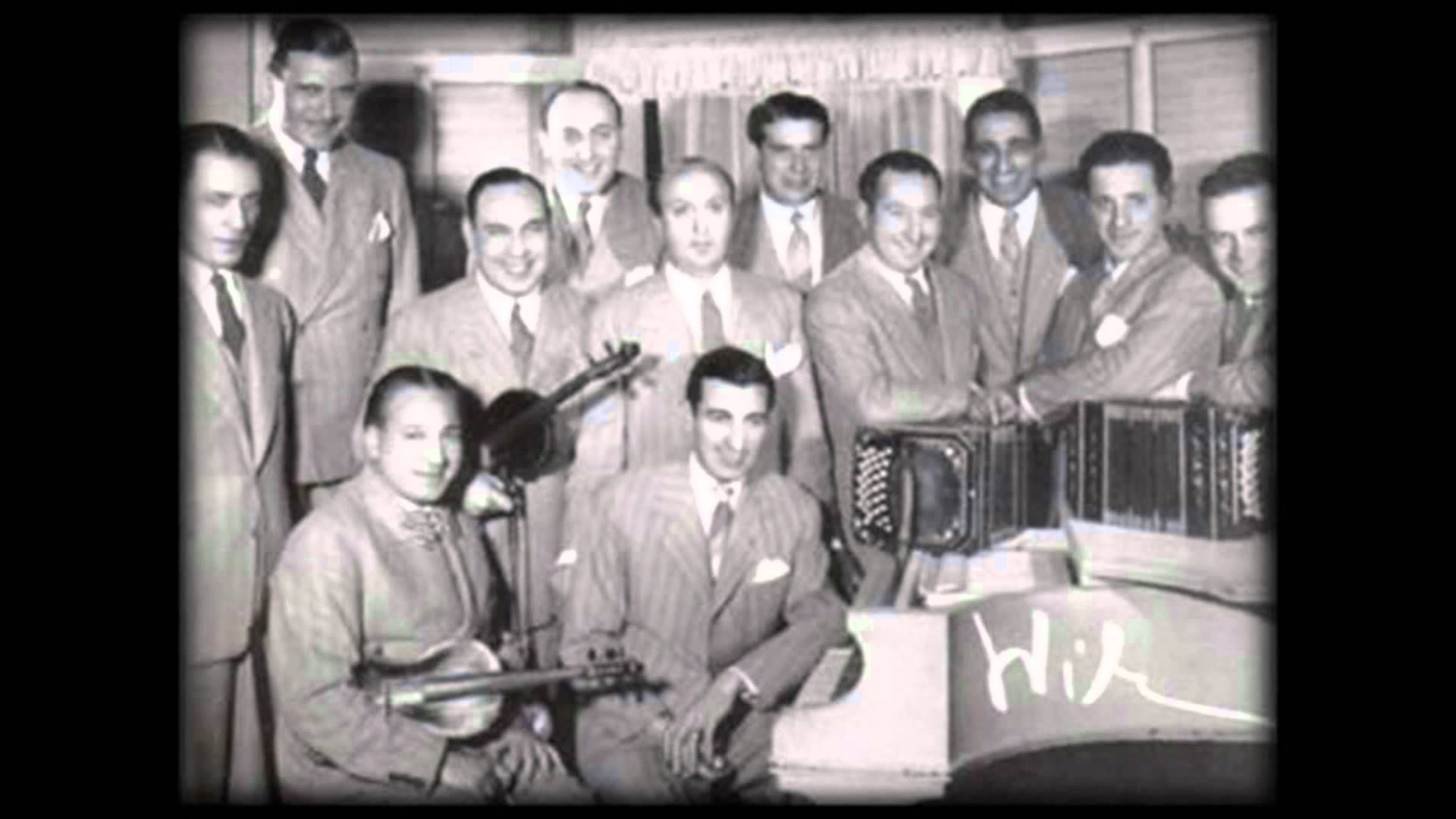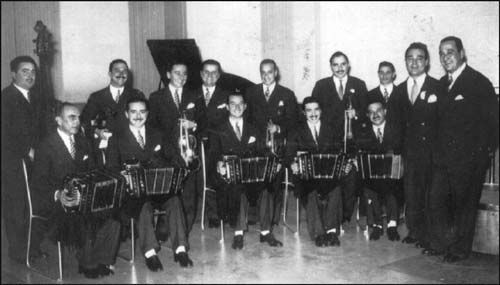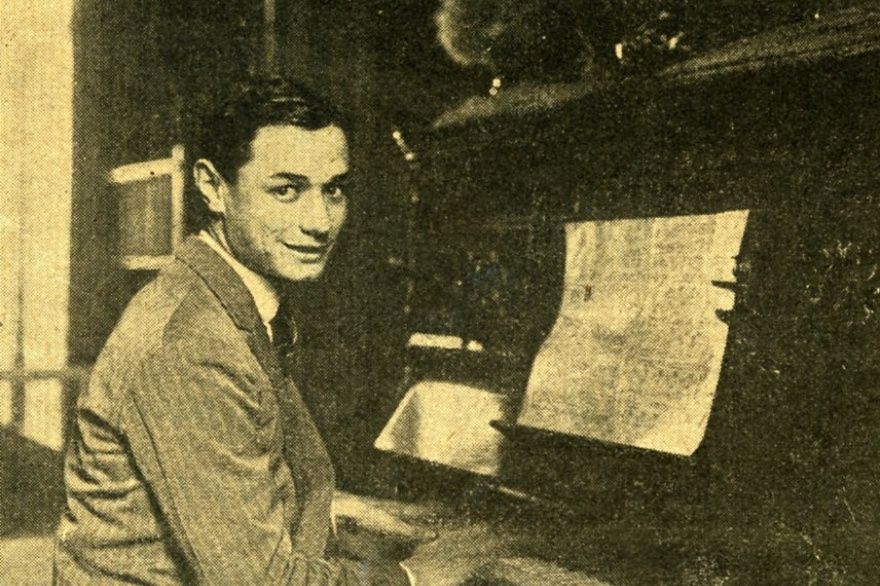“Qué te importa que te llore” by Miguel Caló y su Orquesta Típica with Raúl Berón in vocals, 1942.
 Osmar Maderna
Osmar Maderna
Pianist, leader, composer and arranger
(26 February 1918 – 28 April 1951)
A pianist strongly inclined to romanticism, viewed as the Chopin of the tango.
His subtle, almost ethereal and suggestive touch, deprived of any emphasis or pomposity, led him to create an orchestral style based on the same pattern. Plain and transparent, his arrangements conceived fancy solos alternating piano, bandoneon and violin. That style of his, born toward 1940, influenced the entire decade and contrasted with both the popular tango (with Juan D’Arienzo as remarkable example) and the academic tango (Anibal Troilo). His tangos lack any tough or coarse traces but also any symphonic pretension. He preferred to convey a simple emotion and accurate expression, which he achieved through a permanent self-control. Continue reading at www.todotango.com...
Listen and buy:
 |
 |
We have lots more music and history…
If you are in the San Francisco Bay Area and want to learn to dance Tango, you can:


 Violinist, bandoneonist, bandleader, arranger, and composer (February 22, 1918 – January 19, 2011)
Violinist, bandoneonist, bandleader, arranger, and composer (February 22, 1918 – January 19, 2011)




